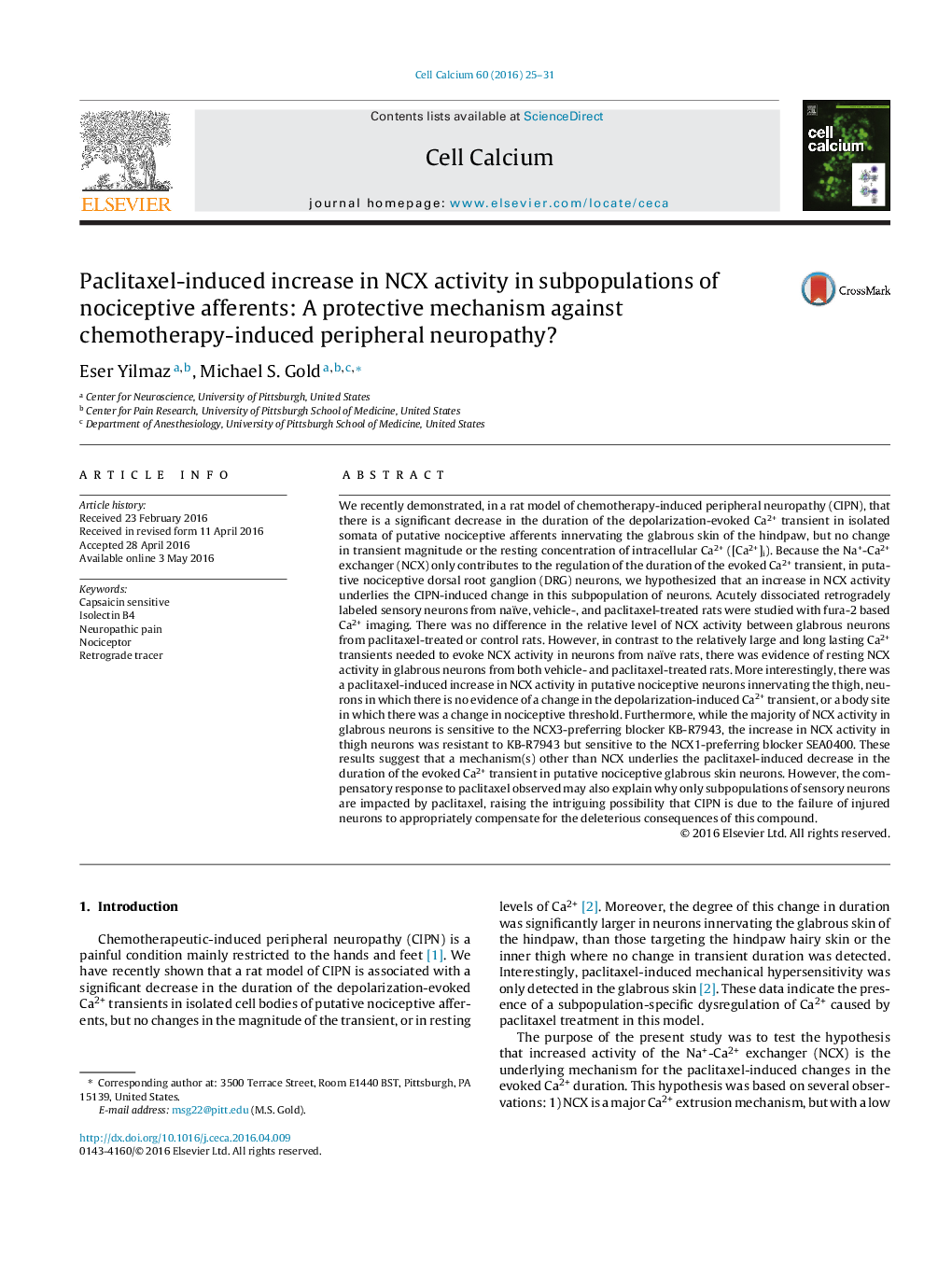| کد مقاله | کد نشریه | سال انتشار | مقاله انگلیسی | نسخه تمام متن |
|---|---|---|---|---|
| 2165844 | 1091770 | 2016 | 7 صفحه PDF | دانلود رایگان |

• Paclitaxel-induced decreases in Ca2+ transient duration are NCX-independent.
• Cremophor EL sensitizes NCX in glabrous skin neurons.
• NCX activity in nociceptive afferents varies with target of innervation.
• NCX activity is increased in neurons resistant to the toxic effects of paclitaxel.
We recently demonstrated, in a rat model of chemotherapy-induced peripheral neuropathy (CIPN), that there is a significant decrease in the duration of the depolarization-evoked Ca2+ transient in isolated somata of putative nociceptive afferents innervating the glabrous skin of the hindpaw, but no change in transient magnitude or the resting concentration of intracellular Ca2+ ([Ca2+]i). Because the Na+-Ca2+ exchanger (NCX) only contributes to the regulation of the duration of the evoked Ca2+ transient, in putative nociceptive dorsal root ganglion (DRG) neurons, we hypothesized that an increase in NCX activity underlies the CIPN-induced change in this subpopulation of neurons. Acutely dissociated retrogradely labeled sensory neurons from naïve, vehicle-, and paclitaxel-treated rats were studied with fura-2 based Ca2+ imaging. There was no difference in the relative level of NCX activity between glabrous neurons from paclitaxel-treated or control rats. However, in contrast to the relatively large and long lasting Ca2+ transients needed to evoke NCX activity in neurons from naïve rats, there was evidence of resting NCX activity in glabrous neurons from both vehicle- and paclitaxel-treated rats. More interestingly, there was a paclitaxel-induced increase in NCX activity in putative nociceptive neurons innervating the thigh, neurons in which there is no evidence of a change in the depolarization-induced Ca2+ transient, or a body site in which there was a change in nociceptive threshold. Furthermore, while the majority of NCX activity in glabrous neurons is sensitive to the NCX3-preferring blocker KB-R7943, the increase in NCX activity in thigh neurons was resistant to KB-R7943 but sensitive to the NCX1-preferring blocker SEA0400. These results suggest that a mechanism(s) other than NCX underlies the paclitaxel-induced decrease in the duration of the evoked Ca2+ transient in putative nociceptive glabrous skin neurons. However, the compensatory response to paclitaxel observed may also explain why only subpopulations of sensory neurons are impacted by paclitaxel, raising the intriguing possibility that CIPN is due to the failure of injured neurons to appropriately compensate for the deleterious consequences of this compound.
Figure optionsDownload as PowerPoint slide
Journal: Cell Calcium - Volume 60, Issue 1, July 2016, Pages 25–31